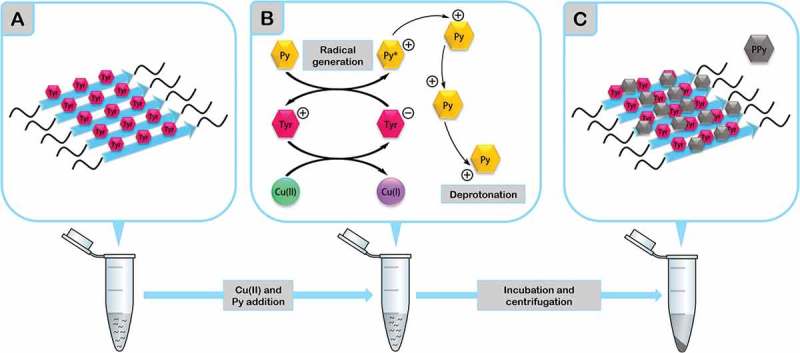Figure 2.

Schematic representation of the catalytic ability of synthetic prion-inspired peptides. A) Self-assembled peptides are centrifuged to recover just the fibrillar material after incubation. B) Copper (II) (in green) and distilled pyrrole vapor (yellow hexagons tagged as Py) are added to the fibrils and incubated for 24 hours. During this incubation, copper (II) is reduced to copper (I) subtracting electrons to Tyr residues, which at the same time receive electrons from Py. This reaction generates Py+ radicals, triggering Py deprotonation and C) inducing its polymerization into polypyrrole (PPy, grey hexagon). PPy becomes a grey insoluble precipitate which deposits specifically over the fibrils.
